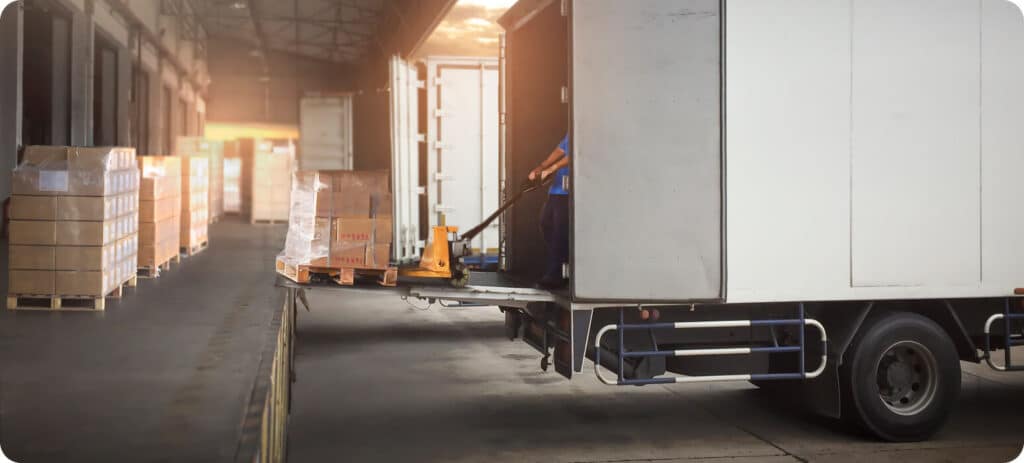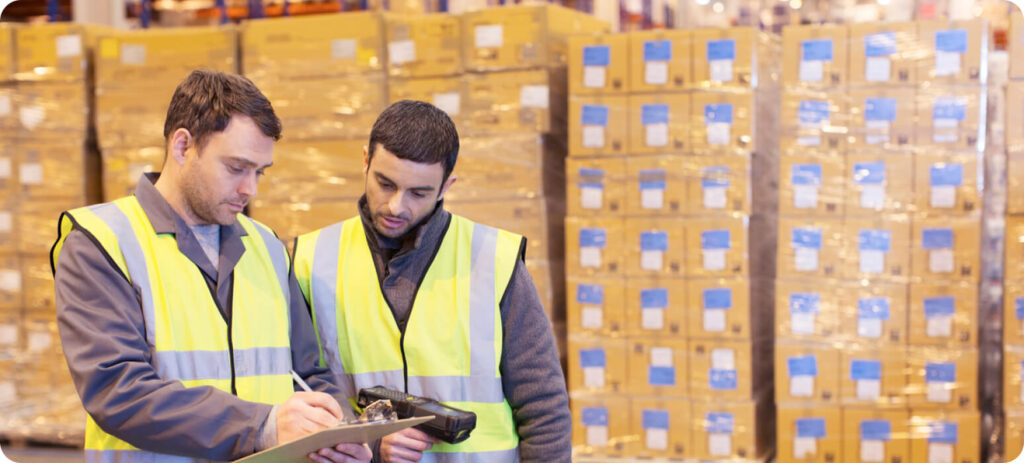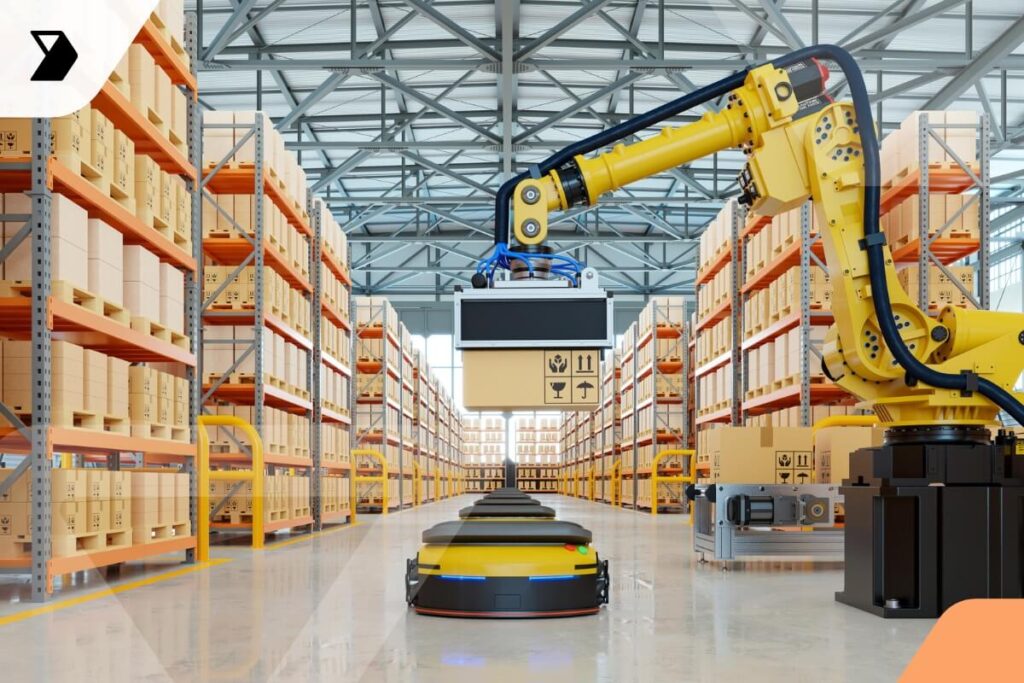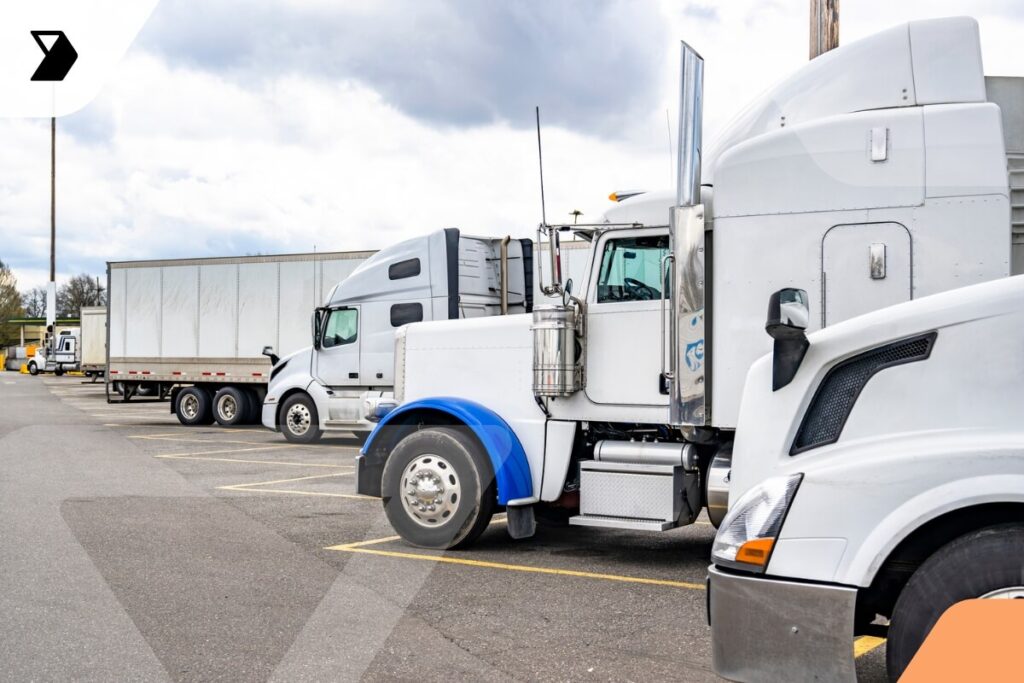Emerging 2024 Logistics Tech: Trends for Smart Supply Chains
In 2024, the logistics industry continues to evolve with significant technological advancements that are reshaping supply chain management and transportation.
Ready to transform your supply chain?

From enhanced fleet tracking through GPS integration to automation and AI technologies, these innovations are not only improving operational efficiency but also addressing the ever-growing demands of e-commerce, customer satisfaction, and delivery optimization.
Technologies like blockchain are enhancing supply chain visibility, addressing carbon emissions, and promoting sustainability practices while ensuring compliance with environmental obligations. The rise of cloud technologies further supports real-time data sharing among fulfillment partners, helping companies navigate market changes and logistics risks, ultimately enhancing their competitive advantage.
Fleet Tracking and GPS Technology
Fleet tracking and GPS technology have revolutionized the logistics industry by enabling real-time data access and enhancing operational efficiency in transportation management, which is crucial for effective freight management.
This transformation has allowed businesses to gain unprecedented insights into their operations, leading to better decision-making and resource allocation. By integrating these technologies, companies can monitor their vehicles’ locations, routes, and fuel consumption, which not only optimizes delivery schedules but also improves safety and accountability.
- For instance, a prominent delivery service reported a 20% reduction in transit times after implementing a fleet tracking solution.
- A logistics provider successfully decreased its carbon footprint by 30% through optimized routing strategies based on GPS data.
These case studies highlight how adopting fleet tracking systems can drive significant improvements in both operational performance and environmental sustainability, contributing to industry resilience.
Automation and Robotics
Automation and robotics are rapidly transforming the logistics industry, addressing labor shortages while enhancing operational efficiency in supply chain processes and facilitating digital transformation.
The integration of advanced technologies, including AI technologies and machine learning, is enabling a more streamlined and precise approach to managing logistics operations. In various sectors, organizations are discovering that leveraging robotics increases overall productivity and minimizes errors.
Automated warehouses, equipped with AI-driven systems, allow for real-time inventory tracking, ensuring that stock levels are optimized. As a result, companies can react faster to market demands, enhancing order fulfillment capabilities and overall customer experience.
Predictive models powered by artificial intelligence and data analytics are reshaping decision-making strategies, allowing businesses to forecast trends and customer preferences while optimizing their operational processes. These advancements are not just revolutionizing warehousing; they are also making transportation more efficient by optimizing routing and reducing costs.
- Improved accuracy in inventory management
- Enhanced speed in order processing
- Reduction of operational costs
- Greater adaptability to market changes
Artificial Intelligence and Machine Learning
Artificial Intelligence and machine learning are at the forefront of technological advancements in the logistics industry, enabling companies to leverage predictive models and data analytics for improved decision-making.
These powerful tools facilitate not only accurate demand forecasting but also streamline inventory management processes, ensuring that resources are allocated efficiently. As businesses navigate the complexities of supply chains, the integration of AI-driven insights allows them to anticipate fluctuations in customer demand and adapt their strategies accordingly. This not only minimizes excess inventory but also reduces costs associated with overstocking and stockouts, enhancing overall inventory management.
- Through sophisticated algorithms, logistics providers can optimize routes, thereby lowering transportation costs.
- AI enhances warehouse management systems by automating tasks and improving tracking accuracy.
Ultimately, these innovations contribute to a superior customer experience, as faster and more reliable services lead to increased satisfaction and loyalty.

Blockchain Technology
Blockchain technology is gaining traction in the logistics industry as a powerful tool for enhancing supply chain visibility and accountability.
This revolutionary technology allows stakeholders to access a single version of the truth, ensuring that every shipment is tracked in real-time. For organizations striving to enhance sustainability practices, blockchain facilitates transparent tracking of goods, from origin to destination, allowing them to verify sourcing, minimize waste, and meet eco-friendly approaches.
By analyzing data through blockchain, companies can also identify inefficiencies, reducing excess transportation and consequently lowering carbon emissions. For example, organizations like Maersk have embraced blockchain to streamline operations and enhance traceability in shipping. Similarly, Walmart employs this technology to monitor its food supply chain, ensuring freshness and safety while significantly reducing its environmental impact.
- Improved tracking of resources
- Enhanced accountability among suppliers
- Data-driven decision-making for sustainability
With these advancements, the logistics sector is not only becoming more efficient but also more environmentally responsible, aligning with industry trends towards green packaging and sustainable logistics.
Challenges with Implementing Technological Solutions
Despite the promising benefits of technological advancements, the logistics industry faces several challenges with implementing these solutions effectively in 2024.
High Costs of Technology Integration
One of the primary barriers to adopting new technologies in the logistics industry is the high costs associated with technology integration, which can deter many businesses from seizing the opportunity to enhance their operations and remain competitive in an ever-evolving market, thereby affecting their strategic initiatives.
Many companies find that the initial investment required for implementing advanced technologies can be daunting, particularly for small to mid-sized firms with limited budgets, especially given the current landscape of labor shortages and competition. This financial challenge can lead to hesitation in making necessary upgrades that would ultimately improve efficiency and profitability.
There are several strategies that can be employed to alleviate these concerns.
- Financing Options: Companies can explore equipment leasing, which allows for lower upfront costs while still gaining access to modern technology.
- Grants and Subsidies: Various government programs provide financial assistance for tech adoption, helping to offset costs.
- Partnerships: Collaborating with technology providers can lead to tailored financing solutions, spreading the investment over time.
By considering these alternatives, firms in the logistics sector can better navigate the initial financial hurdles while positioning themselves for long-term success.
Resistance to Change
Resistance to change is a significant obstacle within the logistics industry, as many stakeholders may be hesitant to embrace digital transformation and new technologies, which can lead to inefficiencies and missed opportunities for growth.
This reluctance often stems from deeply ingrained cultural norms and organizational structures that prioritize traditional methods over innovation. Employees may fear job loss or feel that their skills are becoming obsolete, while management might be concerned about the financial risks associated with implementing new systems.
To address these issues, it is essential to foster a culture of openness and adaptability, where stakeholders understand the potential benefits of change.
- Encouraging communication: Establishing open channels for discussion can help alleviate fears and misconceptions about change.
- Providing training programs: Offering comprehensive training for new technologies can bridge the skills gap.
- Implementing gradual changes: Phased implementations can ease the transition and allow stakeholders to adjust.
By proactively addressing these cultural and organizational factors, logistics companies can create an environment conducive to innovation and improvement.
Lack of Skilled Workforce
The logistics industry is grappling with a lack of a skilled workforce, exacerbated by ongoing labor shortages that hinder technological adoption.
As the sector continues to evolve, the struggle to find qualified personnel not only slows down the integration of innovative solutions but also diminishes overall operational efficiency and competitiveness. Consequently, companies must consider the implications of labor shortages on their technological strategies, leading to a potential stagnation in growth.
To combat these challenges, organizations can explore innovative approaches:
- Partnerships with local educational institutions that offer relevant programs to help bridge the skills gap in the logistics industry.
- Creation of targeted training programs designed to equip employees with necessary skills, focusing on the latest technologies, including automation and AI.
- Apprenticeships and internships that provide hands-on experience and stimulate interest in logistics careers, thereby strengthening workforce planning.
Such initiatives will not only help bridge the existing skills gap but also ensure a steady supply of capable workers, ultimately enhancing the effective integration of advanced technologies in logistics operations.

Future Technological Challenges for the Shipping and Logistics Industry
As we look ahead to the future, the shipping and logistics industry will face several technological challenges that will require strategic initiatives and innovative approaches to overcome.
Cybersecurity Threats
Cybersecurity threats pose a significant risk to the logistics industry as it increasingly integrates advanced technologies and digital platforms, which streamlines operations but also opens the door to potential vulnerabilities that malicious actors can exploit.
As logistics companies adopt more sophisticated systems, they become prime targets for various types of cyberattacks, including data breaches, ransomware, and phishing schemes. This makes it essential for them to understand the importance of investing in robust security measures.
Implementing strong cybersecurity protocols not only protects sensitive data but also helps maintain customer trust, which is vital in a competitive market.
- Regularly update software and systems to patch vulnerabilities.
- Educate employees about phishing attacks and secure password practices.
- Conduct frequent security audits to assess potential weaknesses.
By following these best practices, logistics companies can safeguard their operations and ensure continued customer confidence.
Data Management and Analysis
Data management and analysis will remain critical challenges for the logistics industry as companies strive to leverage vast amounts of real-time data for decision-making.
To thrive in this competitive landscape, effective data management systems are essential. These systems enable businesses not only to store vast quantities of information but also to extract valuable insights that drive operational efficiency.
By utilizing data analytics, organizations can identify patterns and trends in their operations, enhancing their strategy and improving service delivery. Many face the ongoing issue of data silos, which hinder the ability to share information across departments and can lead to missed opportunities. To combat this, companies should consider:
- Implementing integrated data platforms
- Encouraging cross-departmental collaboration
- Investing in employee training for data literacy
Through these efforts, businesses can maximize the value of collected data, paving the way for informed decisions and a more streamlined operation.
Environmental Sustainability
Environmental sustainability is becoming a pressing challenge for the logistics industry, as companies are under increasing pressure to reduce carbon emissions and adopt eco-friendly practices.
In this evolving landscape, logistics providers must explore innovative approaches to integrate sustainability into their operations more effectively.
By leveraging advanced technologies and re-evaluating supply chain processes, these firms can minimize their environmental footprint while remaining competitive.
One strategy involves implementing green packaging, which not only reduces waste but also appeals to environmentally conscious consumers.
Sustainable logistics practices such as optimizing delivery routes and using alternative fuels can significantly lower greenhouse gas emissions.
Regulations play a crucial role here, as governments worldwide impose stricter standards, prompting companies to rethink their approaches.
Similarly, evolving consumer expectations push businesses to prioritize sustainability in order to enhance their brand reputation.
Infrastructure Limitations
Infrastructure limitations can significantly hinder the logistics industry, impacting transportation management and the implementation of multimodal transport solutions.
In today’s fast-paced economy, the strength of logistics hinges on an effective infrastructure backbone. When transportation networks fall short, it not only delays deliveries but also escalates operational costs and complicates supply chain strategies.
This challenge necessitates a comprehensive approach to address existing shortcomings and develop robust frameworks for future growth. To enhance the state of logistics infrastructure, strategic investments in transportation systems are essential, along with supportive policy reforms.
- Identifying key areas for improvement in road and rail networks.
- Encouraging partnerships between public and private sectors.
- Implementing advanced technology to optimize logistics processes.
By focusing on these areas, stakeholders can better navigate the complexities of supply chains and ensure reliable delivery solutions.

Potential Solutions to Overcome Technological Challenges
To address the technological challenges faced by the logistics industry, companies must consider a range of potential solutions aimed at fostering collaboration and enhancing operational effectiveness.
Collaboration and Partnerships
Collaboration and partnerships are vital for enhancing supply chain visibility and driving innovation within the logistics industry.
In today’s rapidly evolving landscape, stakeholders must recognize the immense value that cultivating robust alliances can bring to their operations. By engaging with technology providers, fulfillment partners, and industry experts, businesses can leverage cutting-edge tools and resources to streamline processes and improve performance.
For instance, a notable case involved a global shipping firm that implemented a partnership with a software provider to optimize route planning. This collaboration not only reduced delivery times by 30% but also significantly lowered fuel costs. Such success stories exemplify how strategic alliances can foster enhanced operational efficiency, ultimately providing a competitive edge in the market.
- Access to advanced technologies
- Improved resource allocation
- Shared expertise and insights
Ultimately, fostering strong relationships with diverse stakeholders enables organizations to navigate challenges more effectively and unlock new growth opportunities.
Investment in Research and Development
Investment in research and development is crucial for logistics companies seeking to stay ahead of technological advancements and industry trends.
By focusing on R&D, these companies can explore innovative AI technologies and automation solutions that not only streamline their operations but also enhance overall efficiency. This investment enables organizations to identify and implement cutting-edge tools that can transform their supply chain management processes. Committing resources to R&D allows logistics providers to adapt to ever-changing market demands, ultimately gaining a competitive edge. A strategic emphasis on technological advancements can lead to:
- Improved operational workflows
- Better customer service through faster delivery
- Cost reduction via efficient resource utilization
In the long run, prioritizing research and development in AI and automation will undeniably pave the way for lasting growth and innovation in the logistics sector.
Training and Education Programs
Developing effective training and education programs is essential for addressing the skilled workforce gap in the logistics industry, particularly in areas impacted by digital transformation.
As technological advancements continue to shape the landscape of logistics, the necessity for a workforce that is not only trained but also adaptable becomes paramount. Many companies are recognizing the value of investing in comprehensive training programs, focusing on skills like data analysis, automation, and process optimization.
By fostering a learning culture, organizations can enable employees, ensuring they are well-equipped to handle modern challenges.
- Online courses: Flexible education options that cater to varying skill levels.
- Workshops: Interactive sessions designed to enhance hands-on experience.
- Partnerships with educational institutions: Collaboration to create a structured pathway for skill development.
By embracing these initiatives, the logistics sector can not only fill existing gaps but also stay ahead in a rapidly evolving environment.
Continue reading
Ready to transform your supply chain?
Increase efficiency and productivity. Say goodbye to delays, handwriting errors, and time-intensive manual data entry.



